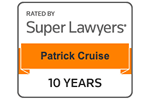- Free Case Evaluation: (423) 634-0871 Tap Here To Call Us
2018 Roadmap of State Highway Safety Laws
Advocates for Highway and Auto Safety, an alliance of consumer, medical, public health, and safety groups and insurance companies and agents, recently released its 15th annual Roadmap of State Highway Safety Laws, detailing which states have optimal traffic safety laws and which laws need to be enacted. The organization’s stated mission is the adoption of federal and state laws, policies and programs that prevent motor vehicle crashes, save lives, reduce injuries, and contain costs. According to the report, more than 400 additional laws are needed across all states and D.C. to fully meet recommended optimal safety laws.
The report grades states and the District of Columbia in five categories: occupant protection, child passenger safety, teen driving (graduated driver licensing programs), impaired driving and distracted driving. States received an overall score combining the five categories.
Occupant Protection
Three optimal laws regarding occupant protection are recommended: primary enforcement front seat belt law, primary enforcement rear seat belt law and all-rider motorcycle helmet law.
According to the National Highway Traffic Safety Administration, nearly 15,000 lives of passengers ages 5 and older were saved in 2016. An addition 2,456 could have been saved with 100 percent participation of safety belts.
Child Passenger Safety
Two optimal laws in this category are recommended – rear facing through age 2 and booster seats. Booster seat laws “require that children who have outgrown the height and weight limit of a forward-facing safety seat be placed in a booster seat that should be used until the child can properly use the vehicle’s seat belt, when the child reaches 57 inches in height and age 8.”
Teen Driving
Advocates recommends six laws:
- Minimum age of 16 for learner’s permit
- Six-month holding period provision
- 50 hours of supervised driving provision
- Nighttime driving restriction provision
- Passenger restriction provision
- Age 18 for unrestricted license
Impaired Driving
Three optimal laws for impaired driving are recommended: ignition interlock devices for all offenders, child endangerment laws, and open container laws.
According to MADD, ignition interlock laws have stopped more than 1.77 million attempts to drive while drunk. A University of Pennsylvania study reveals that ignition interlock laws reduced alcohol-involved crash fatalities by 15 percent.
Child endangerment laws increase DUI penalties when a minor child is in the vehicle. Every state except New Mexico, South Dakota and Vermont has adopted a child endangerment law.
Distracted Driving
Advocates recommends that states adopt driver text messaging restrictions and graduated driver licensing (GDL) cellphone restriction laws to meet optimal distracted driving safety.
Only seven states have not banned text messaging for all drivers. But to date, only 19 states have yet to install a GDL cellphone restriction.
Overall Scores
Tennessee, Georgia, Alabama and North Carolina fell in the middle of the pack, with a yellow rating as given to 31 states. A yellow rating required six to 10 of the 16 optimal laws,. Only six states and D.C. qualified for a green rating: California, Delaware, Louisiana, Oregon, Rhode Island and Washington.
No state got a green rating without a primary enforcement seat belt law covering passengers in all seating positions (front and rear), and no state got a green rating if it had repealed an existing all-rider motorcycle helmet law within the previous 10 years.
Thirteen states received a red rating, which indicates fewer than seven of the 16 optimal safety laws.
Tractor Trailer Safety
Although states were not graded on large truck safety laws, a small section in the beginning of the report addressing such laws was included.
“Available safety technologies such as speed limiting devices and automatic emergency braking (AEB) could already be preventing crashes and mitigating severity if they were required on the entire fleet,” the reports suggests. “Further, trucks should be equipped with underride guards to prevent horrific and violent crashes when a vehicle goes under the rear or side of a truck.”
Advocates also encourages the use of lane departure warning systems and advanced driving assistance systems in large trucks. Many of those technologies are already in place in newer trucks. However, they are not required and are often add-ons for an additional cost.










